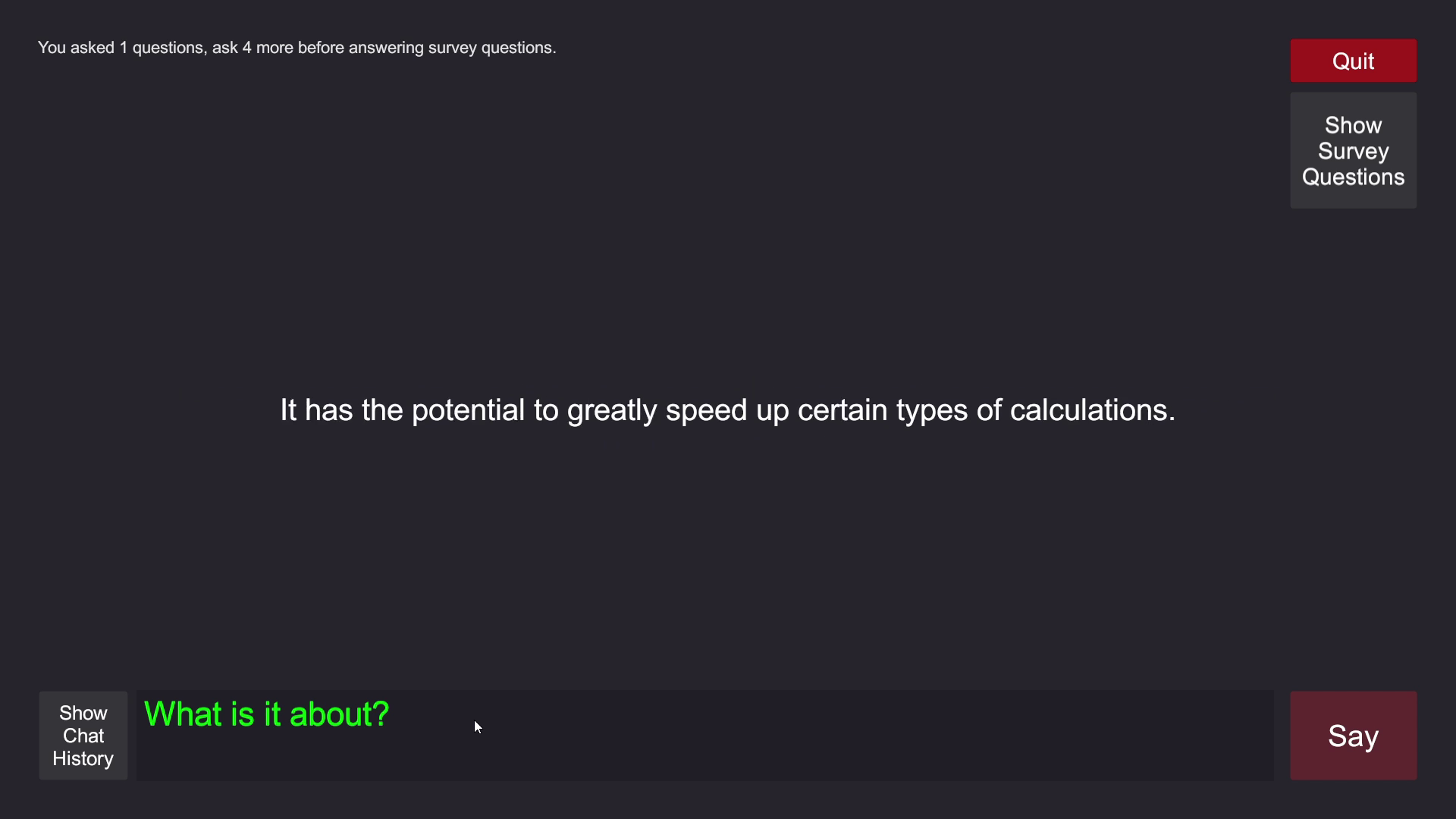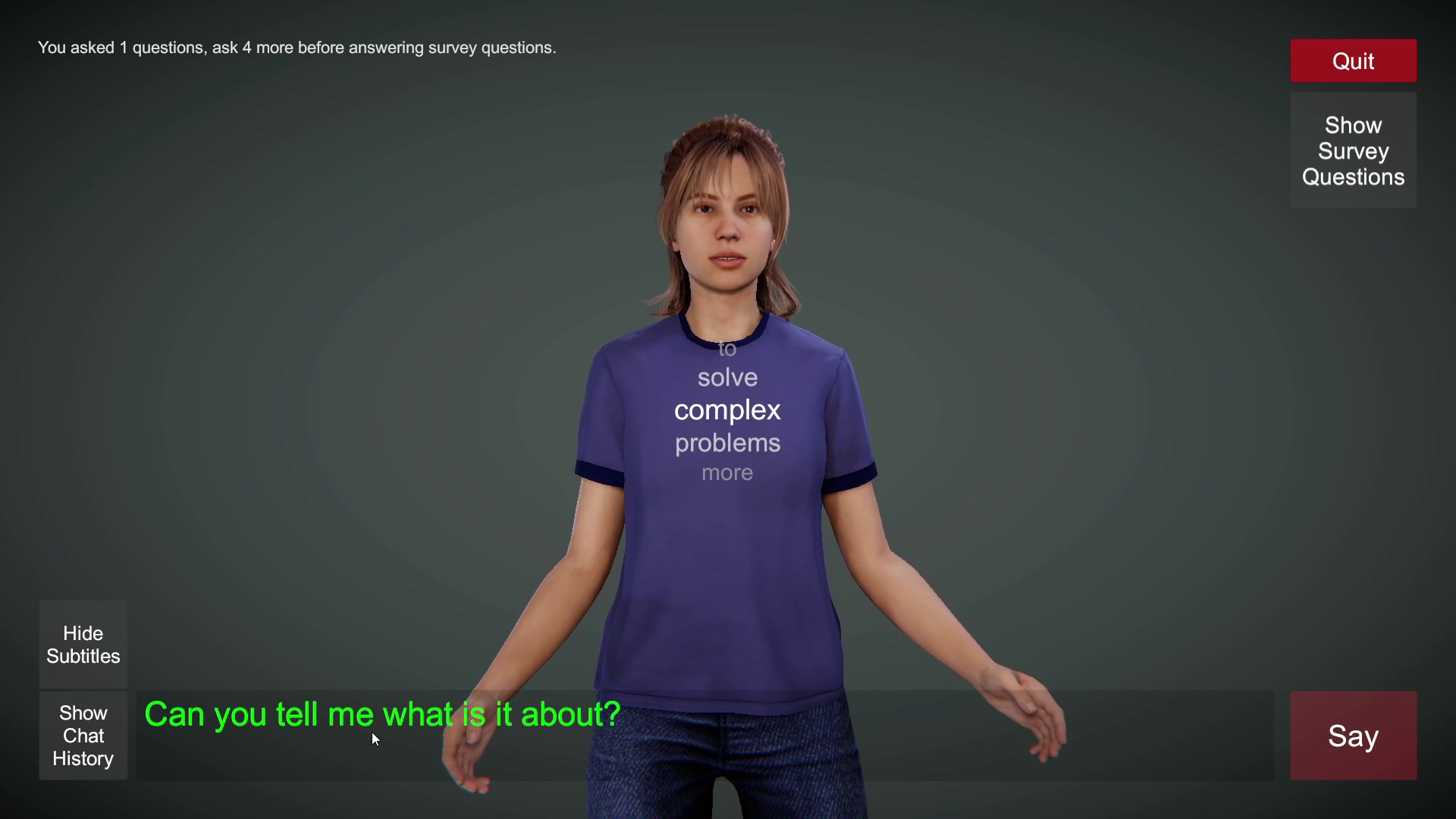- The paper shows that LLM-based educational agents exhibiting high extroversion and agreeableness markedly enhance engagement and positive personality perception.
- It employs a modular multi-modal design by integrating GPT-3.5 dialogue with 3D avatar animations to simulate dynamic personality cues.
- Results reveal that while expressive animation boosts engagement, it does not significantly improve learning outcomes, informing design trade-offs in educational technology.
Effects of Embodiment and Personality Expression on Learning in LLM-based Educational Agents
Overview
This paper presents a systematic investigation into how personality expression and embodiment influence personality perception and learning outcomes in LLM-driven educational conversational agents. The authors extend a multi-modal agent framework with GPT-3.5-based dialogue generation, enabling agents to express high or low combinations of extroversion and agreeableness through both language and animation. The study employs three agent models: a dialogue-only agent (Model D), an animated agent with dialogue-based personality (Model A), and an animated agent with both dialogue and expressive body/facial animation (Model E). A large-scale user study (n=210) evaluates these models across learning, engagement, and perceived personality dimensions.

Figure 1: Different 3D agent models used in the study expressing high (left group) and low (right group) traits.
System Architecture and Implementation
The agent system is built on Unity and leverages a modular architecture for multi-modal personality expression. Dialogue generation is handled by GPT-3.5 Turbo via OpenAI's API, with system prompts tailored to induce high or low extroversion/agreeableness. For embodied agents, body and facial animations are parameterized using Laban Movement Analysis (LMA) mappings and FACS-based facial blend shapes. The system supports real-time text-to-speech (Microsoft TTS), dynamic subtitle display, and agent diversity via four distinct 3D models (gender and skin tone variants).
Key implementation details:
- Dialogue-only agent (Model D): Personality is expressed solely through GPT-generated text and speech.
- Animated agent (Model A): 3D avatar with dialogue-based personality, no animation-based personality cues.
- Expressive animated agent (Model E): 3D avatar with both dialogue and animation cues; LMA parameters modulate gesture style, facial expressions, and gaze to reflect personality traits.



Figure 2: Model D, the dialogue-only agent, used as a baseline for comparison.
Experimental Design
A 3×2 independent-subjects design evaluates three agent models (D, A, E) with high and low extroversion/agreeableness. Participants select a complex topic (e.g., quantum computing, blockchain, transformer architectures) and interact with the agent by posing at least five questions. Post-interaction, participants complete standardized surveys: BFI-2-XS for perceived personality and LOES-S for learning, quality, and engagement. Open-ended questions provide qualitative feedback.
Sample size per condition (n=35) ensures sufficient power for ANOVA-based statistical analysis. Agent appearance (gender, skin tone) and voice are randomized to control for confounds.
Quantitative Results
Personality Perception
- All agents are rated positively for openness, conscientiousness, extroversion, agreeableness, and emotional stability (inverse neuroticism).
- High-trait agents (high extroversion/agreeableness) receive significantly higher ratings for openness, extroversion, agreeableness, and emotional stability (p<0.05 after Hommel correction).
- No significant effect of model type (embodiment) on perceived personality after multiple testing correction.
Learning Outcomes
- All models yield positive mean scores for learning, quality, and engagement.
- Engagement is significantly higher for high-trait agents (F=9.502,p=0.0421).
- No significant differences in learning or quality scores across agent models or personality styles.
- Pearson correlations indicate moderate to strong associations between perceived conscientiousness and learning outcomes, especially for Model D (dialogue-only).
Qualitative Analysis
- High-trait agents are described as more engaging, friendly, and motivational.
- Embodied agents (A, E) are perceived as more interesting and beneficial for learning, though some participants prefer the directness of low-trait agents.
- Expressive animation (Model E) enhances realism and engagement, but the effect on learning is marginal.
- Voice synthesis quality is a limiting factor for perceived realism, especially in dialogue-only agents.
Theoretical and Practical Implications
Theoretical
- The findings support the hypothesis that personality expression—particularly high extroversion and agreeableness—enhances engagement and positive personality perception in educational agents.
- The lack of significant impact of embodiment on learning outcomes aligns with prior mixed results in pedagogical agent literature, suggesting that cognitive load and distraction may offset motivational benefits.
- Strong correlations between perceived conscientiousness and learning outcomes highlight the importance of agent reliability and organizational cues in educational contexts.
Practical
- For real-world deployment, agent personality should be tuned to maximize engagement, with high extroversion/agreeableness preferred for most learners.
- Embodiment and expressive animation can improve user experience and engagement, but may not directly enhance learning outcomes; thus, their inclusion should be balanced against computational cost and design complexity.
- Text-to-speech quality remains a critical bottleneck for realism; cloud-based or neural TTS solutions should be considered for production systems.
- Adaptive agent systems that personalize personality style to individual learner preferences may further optimize engagement and learning.
Limitations and Future Directions
- Learning outcomes are self-reported; future studies should incorporate objective pre/post assessments.
- The study focuses on short-term interactions; longitudinal studies are needed to assess sustained effects.
- Only two personality styles (high/low extroversion/agreeableness) are tested; more granular personality modeling and adaptive matching to learner profiles are promising avenues.
- Integration of online gesture synthesis and context-aware dialogue generation could further enhance agent expressivity and naturalness.
Conclusion
This work demonstrates that LLM-based educational agents expressing high extroversion and agreeableness are perceived as more engaging and positively rated across personality dimensions, regardless of embodiment. While expressive animation increases engagement, its effect on learning outcomes is limited. The results inform the design of future conversational pedagogical agents, emphasizing the importance of personality tuning and the nuanced role of embodiment in educational settings.





